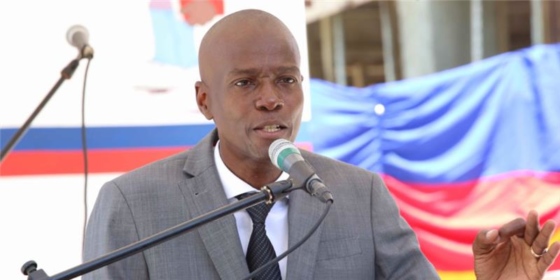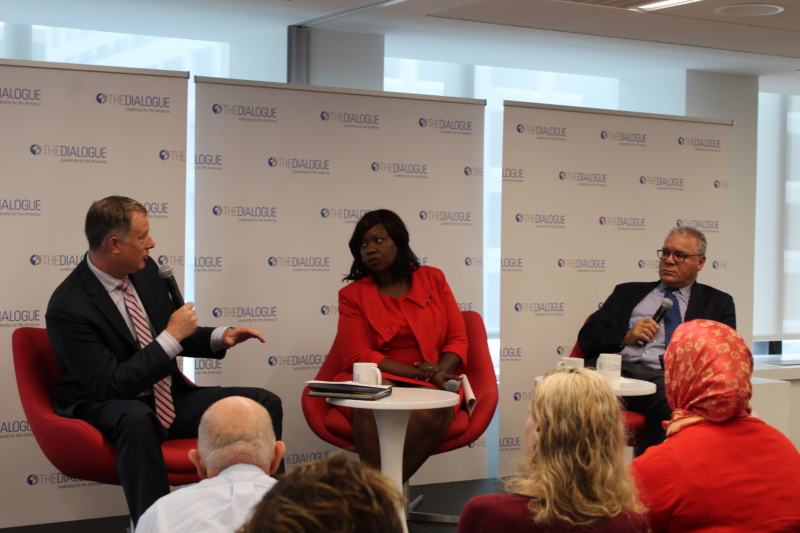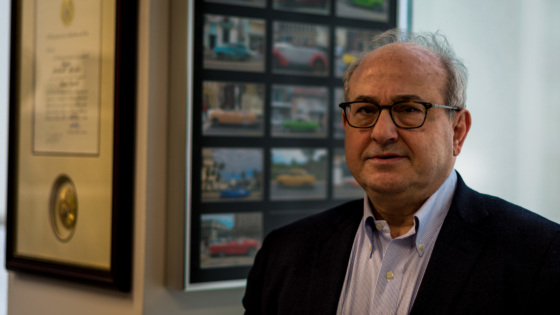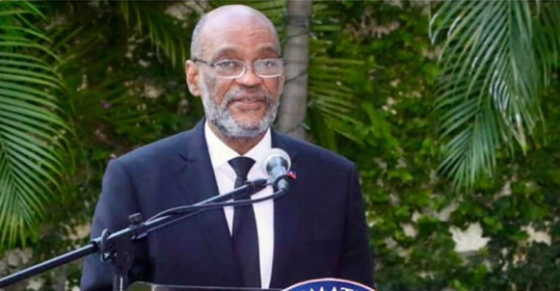
Can Haiti Reverse Spiraling Violence and Kidnappings?
A Latin America Advisor Q&A featuring experts’ viewpoints on the current situation in Haiti and the role of the international community.
On Monday, May 6, the Inter-American Dialogue hosted a panel discussion titled “Is Haiti on the Brink?” to discuss the current situation on the ground in Haiti and prospects for change at a time of political and economic instability. The panel featured Jacqueline Charles, Caribbean Correspondent for the Miami Herald, and Robert Fatton, Jr., the Julia A. Cooper Professor of Politics and Global Affairs at the University of Virginia, who has written widely on Haiti. It was moderated by Dan Erikson, Managing Director at Blue Star Strategies LLC and Senior Fellow at the Penn Biden Center for Diplomacy and Global Engagement. The discussion began with a panorama of the current state of affairs in Haiti and then delved into the structural problems and relationships that preclude effective governance. The question and answer session, meanwhile, was largely dedicated to proffering potential solutions and evaluating the possibilities for change at a moment when the international community is beginning to withdraw from Haiti.
The panel began with a report from the ground. Haiti has been roiling since the October 2018 publication of Senate reports accusing members of the government – mostly associated with former President Michel Martelly (2011-2016) and, by extension, the current administration of President Jovenel Moise – of embezzling Petrocaribe funds. The reports prompted widespread protests under the banner of the “Petrocaribe challenge” – the ‘challenge’ being to discover where the money went – with protesters regarding themselves as “Petrochallengers.” The grievances of Petrochallengers go beyond reports of corruption in the current administration, extending to frustration with general governmental incompetence that undermines its legitimacy.
Moise’s election was marred with fraud, and he was not recognized by his opponent, Jude Célestin, after the 2016 runoff elections. However, the recognition of Moise by the international community — particularly the United States — played a big role in cementing his ability to govern, if ineptly. Moise has made big promises which he has failed to fulfil — such as providing Haitians with consistent electricity —and has missed opportunities to advocate for the Temporary Protected Status (TPS) of Haitian migrants in the United States during visits with the US President and Vice President, seemingly due to a desire to remain on good terms with the US administration. The Haitian economy is weakening, with inflation at 17.5 percent, a growing government deficit, and a dwindling private sector. Relief is not in sight: the worsening financial crisis can be attributed to political impasse, as the International Monetary Fund has put on hold more than $200 million in interest-free loans, the condition for those loans being that a constitutional government had to be in place to present a budget.
The economic crisis has engendered a concomitant deterioration of the security situation as the phenomenon of armed gangs returns and gun violence in poor neighborhoods escalates. For example, Haiti’s human rights advocates and members of its Congress are still waiting for details about the massacre in the La Saline neighborhood in November 2018, on which an investigation was supposedly opened. Meanwhile, MINUJUSTH, the United Nations Mission for Justice Support in Haiti, is withdrawing from the country in October. Although a small UN force will remain, MINUJUSTH’s departure effectively means that the UN is leaving the country after being present in Haiti for some 25 years and pouring billions of dollars into aid efforts. Parliamentary elections are scheduled for October, although many believe they will not take place.
As such, the primary governance challenges for President Moïse include: placing competent people in key positions; reigniting confidence in the government among ordinary citizens; overcoming survivor’s mentality; attracting foreign investment and keeping existing investment; security; political stability; reforming land tenure; overseeing acceptable and accepted elections; controlling inflation; controlling and reducing government expenditures; and tackling corruption, particularly in his political circle.
The discussion then began to explore the structural reasons for the current political chaos. A lot comes down to scarcity: Haiti imports everything that it needs to consume, so structural levels of scarcity lead to “politique du ventre” (politics of the belly), in which the only way to reliably make money—potentially a lot of money--is to enter politics. Politics then becomes a business and politicians use their offices to enrich themselves: there is no credo or desire to change the country, just raw venality. As such, those in power don’t want to leave it, and those out of power want to obtain it for the wrong reasons.
Consequently, for most Haitians, there is intense disenchantment with the whole political class. The power of the political Opposition to mobilize citizens fluctuates due to this cynicism. Certain triggers such as fuel price hikes in July and the Petrocaribe reports cause the interests of citizens and those of the Opposition to converge: both incidents spurred popular protest against the Moïse administration. However, there is no evidence that these popular protests have the longstanding capacity to challenge entrenched political power, especially when political institutions are weak. The protests that occurred in July, October, November, and February were massive, amplified by social media and fed by the discontent and renewed political interest of Haitian youth, who no longer have the option of escaping to Chile after the country tightened visa restrictions in April 2018. However, they reflected more the raw frustration of Haitians at the incompetence of their administration rather than their support for the Opposition. For example, while the Opposition tried to get Haitians on the streets for May Day protests, turnout was lower than anticipated.
This reveals another structural issue. Although there is formally an Opposition—spearheaded by the Lavalas party—political parties in Haiti are weak. They are mostly tied to one candidate’s personality cult and tend to be created right before an election. For example, former president Rene Preval headed a variety of parties that subsisted on his presence, and the most recent one dissolved after his death. Similarly, former President Martelly’s party—the party of current President Jovenel Moïse--is literally called the Tet Kale (Bald Headed) Party in reference to Martelly’s bald head. Martelly hand-picked current President Moïse to represent the party in the 2016 elections, despite him being a total political outsider with no experience. Meanwhile, Fanmi Lavalas is still very much tied to former President Jean-Bertrand Aristide, who continues to be politically active behind the scenes.
The 2010 earthquake revealed the dysfunctional nature of Haitian politics. As the country recovered from the initial shock, the petty feuding in Haitian politics was unchanged. “Politics of the belly” prevailed at a moment when unity and the desire to improve the country should have materialized. Chaotic governance leads to a chaotic society: there is widespread disrespect for the rule of law. Haiti has beautiful laws, but they are irrelevant to the current situation; they are not enforced.
The October elections are unlikely to change this dynamic.
The conversation then turned to Haiti’s relationship with the international community, and the Haitian Diaspora, both of which changed with the 2010 earthquake. After the earthquake, the international community was fighting to fund prominent projects in order to get credit and visibility, to the detriment of actual needs on the ground in Haiti. A lot of money was pledged, and not all of it was actually given; furthermore, as Paul Farmer documented in his book After the Earthquake, most of it (99%) went to international NGO’s, with just 1% going to the government and a negligible amount going to Haitian grassroots organizations. The international community failed to adequately support grassroots Haitian efforts and groups, leading to a situation wherein essential services that were only provided by NGOs are being taken away as they leave. For example, Doctors Without Borders (MSF) has already shuttered a maternity clinic and a head trauma clinic in a country with only three neurologists. Consequently, hospitals have had to hurriedly pull together de facto trauma centers because of the prevalence of motorcycle accidents and gang violence. The hospital that the US government promised hasn’t been completed yet.
In terms of Haiti’s relationship with its Diaspora, it has ebbed and flowed. When Aristide came to power, there was a lot of hope in the Diaspora: people in the United States were supporting his campaign and even building houses in Haiti. However, after the earthquake and Martelly’s election, the Diaspora became more concerned with their neighborhoods and local politics in the US. There is also tension between the Haitian Diaspora and people in Haiti: there are so few jobs that Haitians do not want the Diaspora to return. However, they rely on remittances from Diaspora relatives, which are the lifeblood of the Haitian economy ($3 billion in 2018.)
There are also the millennials, usually second or third generation Haitians, who are very idealistic about Haiti. For example, Google employees of Haitian descent are planning to go down to organize hackathons and train Haitians who are programmers. Such events are common, although they are not part of a larger, holistic project or campaign for the country, and represent pockets of hope and progress in Haiti.
The Q&A section forced the panelists to be forward-looking and advise on how the international community can better help Haiti out of the current crisis.
There is fatigue on both sides of the aid equation: “Haiti fatigue” in the international community and foreign intervention fatigue among Haitians. However, Haitians have a paradoxical attitude to foreign assistance: they oppose it in in principle, but always call for it, especially when there is an election. Similarly, Haitians hate the UN mission (MINUSTAH, then MINUJUSTH), but they fear the vacuum of power that might follow the mission’s departure. It is important to note that there is an opportunistic convergence between the Haitian political class, the elite, the business class, and the foreign community. In this respect, “Haiti fatigue” in the international community might allow Haiti more self-determination.
That being said, abandoning Haiti is not the answer, either. The past model of international aid for Haiti has not worked and must be totally restructured. It has to be qualitatively different. For example, the Petrocaribe program—although it lacked oversight, and most of the money was embezzled—was in principle better because funding was directed at the government and state-led social programs, and not diverted to NGOs.
In terms of a specific development agenda, focus should be placed on transforming and improving Haiti’s agricultural sector, and optimizing it to generate food directed at the internal market. This would curb Haiti’s deficit, mitigate hunger, and also stem the tide of migration from the rural areas, and help with overcrowding of cities: Port au Prince is a city that was built for 300,000 people, and currently houses 3 million, many in informal structures. This transformation must involve people from a variety of sectors, including the private sector, but it should ultimately be the government’s responsibility.
Jamaica could serve as a model for such reforms. It has made serious changes to its agriculture system, introducing greenhouses to spur domestic production. In order to really work, however, many concomitant reforms had to take place, from changing the land tenure model to rebuilding existing greenhouses to withstand hurricanes. It required the support and input of people from different sectors: businessmen, technology developers, and farmers alike, and incorporated new technologies, such as GPS markers for farms and produce. But it was a top-down effort: that is, there was concerted political will to transform this sector, and the Jamaican government went to the international community with a list of things they needed. A similar greenhouse project was attempted in Haiti but failed due to myopia: the greenhouses were not accompanied by the necessary holistic reforms. Piecemeal progress or projects will not ultimately create sustainable change.
Finally, attention must be brought to the international community’s biased perception of Haiti and the situation on the ground. In February 2019, the US State Department issued a level 4 travel warning—“Do not travel”--for Haiti, which it reaffirmed in April. The only other country in the region with that warning is Venezuela. However, many countries in Central America are far more dangerous.
A Latin America Advisor Q&A featuring experts’ viewpoints on the current situation in Haiti and the role of the international community.
Michael Shifter, presidente del Diálogo Interamericano, examinó la situación en Cuba y Haití en una entrevista con El Washington Post Podcast, explorando la importancia de una respuesta adecuada de la administración de Biden hacia la inestabilidad política que aflige a ambos países caribeños.
A Latin America Advisor Q&A featuring experts’ views on Haiti’s deepening crisis as the country’s last democratically elected institution, the Senate, adjourns with no new members to convene a new term and gangs tighten their grip.
 Tamar Ziff / Inter-American Dialogue
Tamar Ziff / Inter-American Dialogue
 Video
Video
